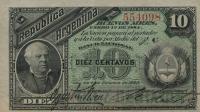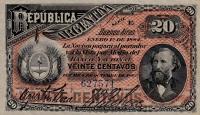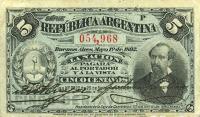
Country Information:
The Argentine Republic, located in South America, has an area of 2.76 million sq. km. and a population of 40.48 million. Capital: Buenos Aires. Its varied topography ranges from the subtropical lowlands of the north to the towering Andean Mountains in the west and the windswept Patagonian steppe in the south. The rolling, fertile pampas of central Argentina are ideal for agriculture and grazing, and support most of the republic's population. Meat packing, flour milling, textiles, sugar refining and dairy products are the principal industries. Oil is found in Patagonia, but most of the mineral requirements must be imported. In 1816, the United Provinces of the Rio Plata declared their independence from Spain. After Bolivia, Paraguay, and Uruguay went their separate ways, the area that remained became Argentina. The country's population and culture were heavily shaped by immigrants from throughout Europe, but most particularly Italy and Spain, which provided the largest percentage of newcomers from 1860 to 1930. Up until about the mid-20th century, much of Argentina's history was dominated by periods of internal political conflict between Federalists and Unitarians and between civilian and military factions. After World War II, an era of Peronist authoritarian rule and interference in subsequent governments was followed by a military junta that took power in 1976. Democracy returned in 1983, and has persisted despite numerous challenges, the most formidable of which was a severe economic crisis in 2001-02 that led to violent public protests and the resignation of several interim presidents. The economy has recovered strongly since bottoming out in 2002.














